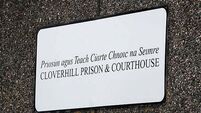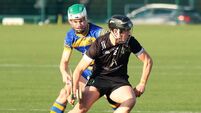Spotted Dog

St Patrick’s Day brings not only the Irish but the friends of the Irish, descendants of the Irish and the ‘wannabe’ Irish onto the streets and into the pubs to eat, drink, sing and be very merry on March 17 every year.
Tourism Ireland’s Global Greening initiative will light up iconic buildings in over 30 sites all over the world on every continent to focus attention on the Emerald Isle.
For months before St Patrick’s Day, I get requests for traditional Irish recipes from travel and food writers filing their copy for the March issue of their magazines and newspapers.
Often they are looking for the old favourites but I use every opportunity to tell people not just about our traditional food culture but about the vibrant Irish food scene and to remind them that we don’t actually live on corned beef and cabbage in Ireland.
The sad fact is that most Irish people don’t really believe we have a food culture — try asking the people around you now to name ten Irish dishes. Most will make an enthusiastic start with Irish stew, bacon and cabbage, corned beef and cabbage, maybe colcannon and champ perhaps soda bread but after that the stuttering starts.
Recently, during a lecture in one of our catering colleges, I offered a prize to any student who could spontaneously name ten Irish dishes. One person did but with difficulty — I gave them a present of my Irish Traditional Cooking book!
We’ve got tons to be proud of but there’s no point in arguing that Ireland has one of the great cuisines of the world.
There’s a wealth of information out there, from medieval times to the present day, about the food of farmers, fishing communities, the islands and monasteries, food of the small houses and food of the great houses — all reflecting our food heritage through the ages.
Over the years I have researched and collected information on traditional food. My first Irish Traditional Food book was published in 1995 and the revised edition came out in 2012.
More recently we have started a website of Irish recipes, a resource for those who want to find and rediscover some of our traditional foods, share with family and friends or particularly showcase Irish food on their menu in the year of The Gathering. The address is www.irishrecipes.ie.
If you have family recipes that you would like included or food memories we’d love to hear them, send them to darina.bcs@gmail.com.
Here are some recipes from our rich baking tradition for you to share with family, friends and customers not only on St Patrick’s weekend but throughout the year.
At times of the year when the men were working particularly hard in the fields, the farmer’s wife would go out of her way to reward them with a richer bread than usual for tea.
According to her means she might throw in a fistful of currants or raisins, some sugar and an egg, if there was one to spare.
The resulting bread, the traditional Irish ‘sweet cake’, had different names in different parts of the country — spotted dog, curnie cake, railway cake and so on.
Currant bread was also a treat for Sundays and special occasions.
450g (1lb) plain white flour
1–2 tbsp sugar
1 level tsp salt
1 level tsp bread soda (bicarbonate of soda), sieved
75–110g (3–4oz) sultanas, raisins or currants
300ml (10fl oz) sour milk or buttermilk
1 egg, free-range if possible (optional — you may not need all the milk if you use the egg)
Preheat your oven to 230C/450F/Gas Mark 8.
Sieve the dry ingredients, add the fruit and mix well. Make a well in the centre and pour most of the milk in at once with the egg.
Using one hand, mix in the flour from the sides of the bowl, adding more milk if necessary. The dough should be softish, not too wet and sticky.
When it all comes together, turn it out on to a floured board and knead it lightly for a few seconds, just enough to tidy it up.
Pat the dough into a round, about 4cm (1½inch) deep and cut a deep cross on it. Bake for 15 minutes, then turn down the oven to 200C/400F/Gas Mark 6 and continue to cook for approximately 30 minutes. If you are in doubt, tap the bottom: if it is cooked, it will sound hollow.
Serve spotted dog freshly baked, cut into thick slices and generously slathered with butter. Simply delicious!
Many Americans are convinced that Irish soda bread traditionally contains caraway seeds.
I was baffled by this assumption until I discovered that seedy bread was certainly made in Donegal and Leitrim.
The tradition of putting caraway seeds in bread must have been taken to the United States by Irish emigrants.
50g (1lb) plain white flour
1 level tsp salt
1 level tsp bread soda (bicarbonate of soda)
1 tbsp sugar
2 tsp caraway seeds
55g (2oz) butter (optional)
300–350ml (10–12fl oz) buttermilk
First fully preheat your oven to 230C/450F/gas mark 8.
Sift all the dry ingredients and add the caraway seeds. Rub in the butter, if using.
Make a well in the centre and pour in most of the milk at once.
Using one hand, mix in the flour from the sides of the bowl, adding more buttermilk if necessary.
The dough should be softish, but not too wet and sticky.
When it all comes together, turn it out on to a floured board and knead lightly for a second, just enough to tidy it up.
Pat the dough into a round about 2.5cm (1in) deep and cut a cross on it to let the fairies out!
(Let the cuts go over the sides of the bread to make sure of this.)
Bake in the hot oven for 15 minutes, then turn down the heat to 200C/400F/gas mark 6 for 30 minutes or until just cooked.
If you are in doubt, tap the bottom of the bread: if it is cooked it will sound hollow.
This recipe was described to me by Mrs McGillycuddy from Glencar in Co Kerry, who still makes it occasionally.
A richer treacle bread, closer to gingerbread, was and still is widely made in Ulster.
1–2 tbsp treacle
1 egg (optional), free range if possible
300ml (10fl oz) approx, sour milk or buttermilk to mix
450g (1lb) white flour, preferably unbleached
1 level tsp salt
1 level tsp bread soda (bicarbonate of soda)
First fully preheat your oven to 230C/450F/Gas Mark 8.
Heat the treacle until it begins to run. Whisk the egg, if you are using it, add to the treacle and mix well.
Then add the buttermilk.
Sieve the dry ingredients. Make a well in the centre. Pour in most of the liquid all at once.
Using one hand, mix in the flour from the sides of the bowl, adding more liquid if necessary.
The dough should be softish, not too wet and sticky. When it comes together, turn it out on to a floured board.
Tidy it up and flip over the edges with a floured hand. Pat the dough into a round about 2.5cm (1in) deep and cut a cross on it.
The cuts should go over the sides of the bread. Bake in the hot oven for 15 minutes, then turn down the oven to 200C/400F/Gas Mark 6 for 30 minutes or until cooked.
If you are in doubt, tap the bottom of the bread, it will sound hollow if cooked. Cool on a wire rack.
Porter cake is now an established Irish cake, rich and moist with ‘plenty of cutting’.
450g (1lb) plain white flour
Pinch of salt
1 tsp baking powder
225g (8oz) caster or brown sugar
½ tsp freshly grated nutmeg
½ tsp mixed spice
225g (8oz) butter
450g (1lb) sultanas
55g (2oz) chopped peel
55g (2oz) crystalised cherries
300ml (10fl oz) porter or stout
2 eggs, free range if possible
Preheat the oven to 180C/350F/gas mark 4. Line the bottom and sides of a 20cm (8in) cake tin, 7.5cm (3in) deep, with greaseproof paper.
Sieve the flour, salt and baking powder into a bowl.
Add the sugar, freshly grated nutmeg and mixed spice. Rub in the butter.
Add the fruit, then mix the porter with the beaten eggs.
Pour into the other ingredients and mix well. Turn into the lined tin and bake for about 2½ hours.
Cool in the tin, then store in an airtight tin.
Look out for the new edition of the GIY (Grow it Yourself) magazine Grow.
Both the website and the magazine are chock-full of growing information and tips, so this could be the moment.
Brown Envelope Seeds have a growing selection of heirloom varieties chosen for flavour rather just quantity. www.giyireland.com and www.brownenvelopeseeds.ie
In Urru Bandon, pear and vanilla jam made by Nichola Smyth of the Big Red Kitchen from Stamullin in Meath.
Nichola’s jam won a Blas na hÉireann award in 2012. We enjoyed it with blue cheese. www.urru.ie and www.bigredkitchen.ie
Hand-carved wooden spoons by hedgerow restorer Neil Foulkes in Co Leitrim.
He sources woods that are suitable for food use in his hedgerow work, carves and seals them with organic oils. ! Check out spoonfest.co.uk
Swedish Pane Carasau — I found this thin crisp bread at Toonsbridge Shop outside Macroom. Delicious to eat with cheese or just to snack on. There’s also a café beside the Toonsbridge Creamery where Toby Simmonds and Sean Ferris make their buffalo mozzarella, etc. A perfect weekend outing, open Friday, Saturday and Sunday — www.therealoliveco.com/toonsbridge
Fans of Poachers Inn in Bandon can now try some favourite dishes, plus Barry and Catherine McLaughlin’s favourite Sicilian Nocellara Del Belice green olives — www.poachersinnbandon.com — 023-8841159.
An indoor Producers Farmers Market opens this weekend in Waterford with over 25 stalls at 44 Merchant’s Quay (opposite Lucy’s Flowers) – Second Nature Oils; Annstown Vegetable, Knockanore Cheese; Knockdrinagh Cheese; Chocolatier; Crêpes. Friday/Saturday/Sunday from 12pm-5pm — not to be missed.














